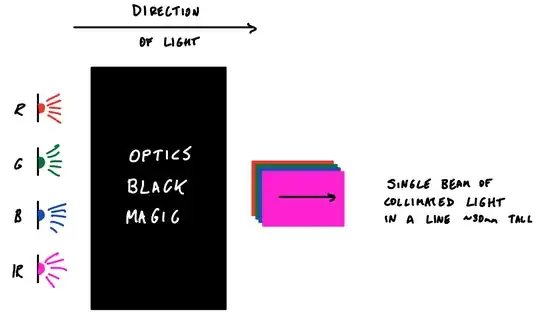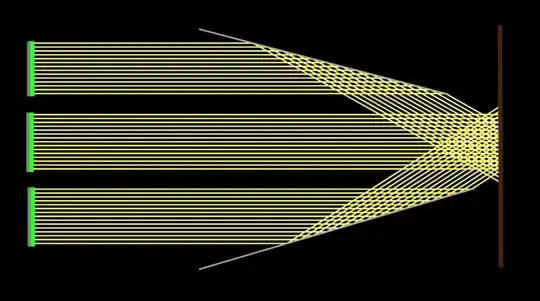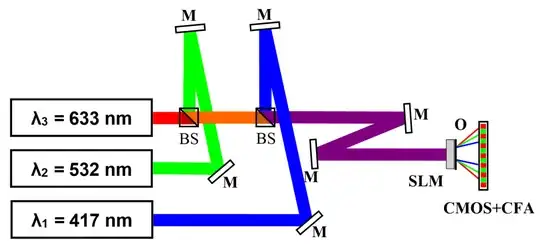I'd like to design a device that takes 4 channels of light from sets of LEDs and multiplexes them into one optical path, which finally creates a rectangle pattern of light that is approximately 30mm tall and 1mm wide. This is to be used with a line scan camera. In practice, only one of the 4 channels would be illuminated at any given time.
Here's a rough drawing of what I'm imagining:
I've thought about doing it with mirrors as shown below, but obviously my LEDs are not perfectly collimated sources of light so this would not work. Perhaps this can be solved with a pair of convex cylindrical lenses facing each other to roughly collimate the light, but that would require a lot of lenses and money.
I've also seen a lab setup in this paper, but once again my light sources are not collimated and I suspect a lot of light would be lost to the beam splitters. The LEDs I'm using are in the 100s of lumens.
I would appreciate if anyone could point me in the right direction on this design problem. I'm familiar with the basics of optics, but clearly I'm not an expert. Thank you.


